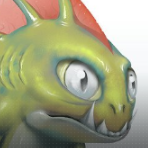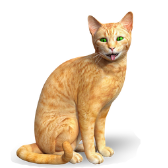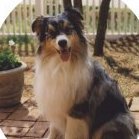-
Posts
1,151 -
Joined
-
Last visited
Reputation Activity
-
 smadell got a reaction from R C-R in Stamp Layer?
smadell got a reaction from R C-R in Stamp Layer?
Apologies to Robin Whalley, but this function has (and still is) available from the beginning. Under the Layer menu, simply choose Merge Visible. Affinity Photo will create a new pixel layer which incorporates the entirety of your layer stack, essentially merging all of the visible layers into a single pixel layer. If you're interested in preserving all of the non-destructive edits, but don't want to wait for them to be re-computed and re-drawn with each subsequent editing change, you can create a Merge Visible layer and then turn OFF all of the layers underneath it.
-
 smadell got a reaction from walt.farrell in Add noise filter not working
smadell got a reaction from walt.farrell in Add noise filter not working
If you’re looking for more obvious noise/grain, try this:
-
 smadell got a reaction from Undix Galore in Affinity Photo from 10,000 Feet - Free PDF
smadell got a reaction from Undix Galore in Affinity Photo from 10,000 Feet - Free PDF
I am attaching a free PDF called “Affinity Photo from Ten Thousand Feet.” This is a 41 page book that explains many of the concepts and questions that forum members ask frequently.
Much of the information is based on presentations given to my local photography club. Some of it is based on a series of articles written for the club’s newsletter. Much of the book is newly written material, based on years of working to understand digital photography, how color works, and how Affinity Photo fits into that picture.
Please enjoy the book. All I ask in return is that you look it over and leave a comment.
Affinity_Photo_from_Ten_Thousand_Feet.pdf
-
 smadell got a reaction from Frozen Death Knight in Add Film Grain (free macros)
smadell got a reaction from Frozen Death Knight in Add Film Grain (free macros)
Adding grain to a photo is a nice way to emulate vintage images, especially older black and white photos. It has always bothered me a bit that Affinity Photo does not include a mechanism to introduce grain, other than to use the “Add Noise” filter. While adding noise is nice, it adds such a fine amount of variation that it is often quite literally unnoticeable.
I have admired the Film Grain effect that is available in other software, such as Nik’s Silver Efex. These filters can often vary grain size and intensity; sometimes grain can be added to shadows, midtones, and highlights in differing amounts.
What I’ve attached is an .afmacros file called Film Grain. This is a macros Category and should be imported into the Library panel. It includes two macros. The first is called Add Film Grain - simple. It allows the user to add grain with 2 parameters – intensity and size.
Grain - Intensity
The grain intensity defaults to 100%, but can be set to any value between 0 and 100. At 0% intensity, the grain effectively disappears. To understand intensity, think “contrast.”
Grain - Size
The size slider accepts values between 0 and 1, with the default being 0.2. The appropriate value will differ based on the image being treated, and the same perceived size might need higher values when the overall dimensions of the image are larger. Also note that values above 0.8 are rounded down to 0.8 (and this forms an effective upper limit to the slider). This is done primarily because the math breaks down at higher values.
The second macro is called Add Film Grain - by tonal range. It includes the same intensity and size parameters, but also lets the user set opacity levels for highlights, midtones, and shadows separately.
Grain Opacity - Highlights, Midtones, and Shadows
There are three separate sliders for highlights, midtones, and shadows respectively. Each defaults to 100%, but can be set to values between 0 and 100. While the “simple” macro creates a single Film Grain layer, the “tonal range” version creates a group containing 3 layers, one each for the three tonal ranges. The Grain Opacity sliders simply vary the opacity of the corresponding layers within that group.
Finishing Touches
When each of the macros finishes, the Blend Range for the result (the Film Grain layer in the case of the “simple” macro, and the Group in the case of the “tonal range” macro) is set to diminish the effect of the grain on the highlights slightly. This is an aesthetic choice on my part, and I think you will agree. However, you can set the Blend Range to anything you might like, as desired.
* * * * * * * * * * * * * * * * * * * * * * * *
For most users, the “simple” macro will be enough. It lets the editor vary the Intensity of the grain and also the Size. I have always liked adding grain that was a bit larger, because it becomes more noticeable.
For other users, the “tonal range” macro will allow you to add some additional nuance to the grain, by letting you emphasize grain in the shadows, midtones and highlights. Do this by first setting a global Intensity and Size, and then adjusting the opacity of the 3 tone ranges as desired.
* * * * * * * * * * * * * * * * * * * * * * * *
Here are samples of the two macros, along with the settings as applied. The differences between the two results is quite subtle, but might be worth the effort in some cases.
* * * * * * * * * * * * * * * * * * * * * * * *
As with all the macros I have posted, I have tested these on one computer under a limited number of conditions. I cannot guarantee anything, but I have no reason to think they will not work for you just as they have for me. The macros are free, with the suggestion to “pay it forward.” As you become more proficient, be sure to share your experience and your work with others.
By the way, happy holidays to everyone. Here’s hoping that 2021 is a more positive, uplifting year than 2020. And maybe, just maybe, we’ll be able to ring in 2022 in a crowd without any masks!
Film Grain.afmacros
-
 smadell got a reaction from manfred9 in Pastel Watercolor Effect
smadell got a reaction from manfred9 in Pastel Watercolor Effect
I recently watched one of @dmstraker Dave Straker’s InAffinity tutorials about “Pastel Colour Grading…” and it gave me some ideas. So, thanks to you for the inspiration, Dave!
I’ve attached another macro for creating a specific Artistic Look – this one called a Pastel Watercolor Effect. The attached file is a macro category (even though it only contains a single macro); you can import it into the Library Panel in the Desktop version of Affinity Photo, and it is compatible with the iPad version as well. (In my own preliminary testing, the macro works fairly well on an iPad, although there are some issues with missing items in the dialog box that appears for setting parameters.)
When you click the macro, it creates a number of layers inside of a group. The group is called “Pastel Watercolor Effect” and it can be turned on and off by simply showing or hiding the entire group. When you invoke the macro, you will be presented with a number of options in a dialog:
1-6] Lighten Color - Cyan, Magenta, Yellow, Red, Green, Blue
All of these color ranges are initially set to a value of -200%. As you move each of the sliders to the right, that particular color range will be selectively lightened. If you set any of the sliders all the way to 100% then that color range will go to white.
7] Set Amount of Pastel Blurring
This slider defaults to a value of 25 px. Setting it higher or lower will adjust the amount of “smudging” that the pastel layer displays.
8] Set Intensity of Outlines
This slider defaults to a value of 0.7. You can set it to values between 0 and 2, with higher values giving you darker and more intense outlines. If you set the Intensity slider to 0, the black outlines will effectively disappear.
9] Adjust Brightness
Brightness defaults to a value of 20%. You might want to increase it if (i) you have increased the outline intensity significantly, or (ii) to compensate for changes (particularly decreases) you might make to the Contrast.
10] Adjust Contrast
Contrast defaults to 0%. Adjust this to taste.
I’ve attached 2 photos (below) to show Before and After versions using this effect. Included in the photos are the settings that were used (which are a bit different from the default values).
* * * * * * * * * * * * * * * * * * * * * * * * * * * *
As with all of the macros I have submitted, please note that I am only one person and have tested this on a limited number of images on a single computer. There is no way to have foreseen every possible scenario. I am hopeful (but obviously won’t guarantee) that you’ll like the results.
If you do like the macro, please keep it and enjoy it. This is “pay it forward software,” the happy result of an abundance of learning gleaned from the members of this forum who are so generous with their time and expertise!
Pastel Watercolor Effect.afmacros
-
 smadell got a reaction from Stevie D in Cartoon effect with AP
smadell got a reaction from Stevie D in Cartoon effect with AP
As another alternative, here's a macro that I just posted a couple of moments ago.
-
 smadell got a reaction from Cmak in Cartoon effect with AP
smadell got a reaction from Cmak in Cartoon effect with AP
If you're not completely satisfied with that effect, you might want to check out a macro I posted a while ago. It's called "Paint by Numbers" and it gives a somewhat different result.
https://forum.affinity.serif.com/index.php?/topic/83173-paint-by-numbers/&tab=comments#comment-438291
-
 smadell got a reaction from pruus in Watercolor & Ink Simulation
smadell got a reaction from pruus in Watercolor & Ink Simulation
I confess that I have always been partial to Watercolor & Ink paintings. I suppose they’re something you can either love or hate. Anyway, I set out to create a method to simulate a Watercolor & Ink treatment on a photograph. I have attached a macro that will do this.
1 - Start with a Pixel layer. In most cases, you can open an image as a Background layer.
2 - Click the “Watercolor & Ink Simulation” macro to generate a nice, somewhat stylized image.
3 - The macro generates 2 groups - one for the base colors (the “watercolor” part) and one for the outlines (the “ink” part).
4 - You can adjust many of the parameters to your taste. Expand the “Outline Group” and the “Color Group” to access the individual layers.
I) In the “Outline Group,” find the “Thicken Outlines” layer. This is a Levels adjustment. If you move the Black Level slider up or down, the outlines will become more or less prominent.
ii) In the “Color Group,” there is a layer called “Lighten Colors.” This is also a Levels adjustment. Adjusting the Gamma slider up or down will lighten or darken the base colors.
iii) In the “Color Group,” there is a layer called “Posterize Colors.” This is a Posterize adjustment, and its default value is 8. If you move this up or down, you can inject greater or fewer colors into the image, changing its effect from more realistic to more cartoon-like.
[As an aside, I am indebted to the Affinity Revolution user for his video tutorial entitled “Turn any Photo into a Pencil Drawing,” which formed the basis for much of the “Outline Group” portion of this effect. Thanks, Ezra!]
* * * * * * * * * * * * * * * * * *
So, here is a before and after version using an image taken at Hearst Castle in California.
And here is another before and after version taken at a very tourist-laden luau in Hawaii.
Watercolor and Ink.afmacros.zip
-
 smadell got a reaction from Retne in Copy adjustment layer mask
smadell got a reaction from Retne in Copy adjustment layer mask
Max...
You can’t copy the alpha channel directly, which is what you’re hoping for, right? But you can do this in a different way.
1) In your first adjustment layer, use the black and white brushes to create a mask (as usual).
2) With the adjustment layer selected, open the Channels panel. Don’t worry about the “composite” channels; look for the Layer channel. It will be named for the adjustment. Click and hold on the 3 dots to the right. From the dropdown menu, choose Create Spare Channel. You’ll see a new channel at the bottom of the list.
3) Go back the the Layers panel and create your second adjustment layer. Leave the second adjustment layer selected.
4) Open the Channels panel. Find the Spare Channel you just created. Click the 3 dots and select Load to <adjustment name> Alpha. Your first adjustment layer’s mask (i.e., its alpha channel) will be copied into the second adjustment layer.
-
 smadell got a reaction from PaulEC in Changing the colour of the "paper"
smadell got a reaction from PaulEC in Changing the colour of the "paper"
Your image lends itself to a very easy solution. The "ink" you want to keep is black, and the background is lighter, and fairly uniform. Select the layer and click the gear icon at the top, right of the Layers panel. This opens the Blend Options panel. Set the graph (on the left) to include the darkest areas (the ink) and exclude the lighter areas (the background). Now, you can drop a Fill Layer into the Layers stack and drag it underneath the original layer. Set that Fill Layer to be any color you want – that's now the new color of your background paper.
-
 smadell got a reaction from Alfred in The perspective tool
smadell got a reaction from Alfred in The perspective tool
Also check out the Deform… filter (under the Filters>Distort menu). It's not intuitive at all, and I very rarely use it, but it's really powerful when you figure out how to utilize it. Check out this YouTube video by Olivio Sarikas, which gives some really good instruction on using this tool for subtle distortions.
z
-
 smadell got a reaction from R C-R in The perspective tool
smadell got a reaction from R C-R in The perspective tool
Also check out the Deform… filter (under the Filters>Distort menu). It's not intuitive at all, and I very rarely use it, but it's really powerful when you figure out how to utilize it. Check out this YouTube video by Olivio Sarikas, which gives some really good instruction on using this tool for subtle distortions.
z
-
 smadell got a reaction from Mereteran in Some people have a disability detecting colours
smadell got a reaction from Mereteran in Some people have a disability detecting colours
Good evening @William Overington (at least in my neck of the woods). You can easily simulate different forms of color blindness without ever leaving Affinity Photo. Simply add a LUT at the top of the Layers stack, and set the LUT to one of AP’s presets - Deuteranopia or Protanopia (for red-green deficiency) or Tritanopia (for blue-yellow deficiency). No need to travel to a separate web site!
-
 smadell reacted to R C-R in Layer adjustments
smadell reacted to R C-R in Layer adjustments
I don't know why but when I tested this about an hour ago, the adjustment was being applied to all the pixel layers, not just the one immediately below the adjustment layer.
But now it works just like in your video, so I stand corrected. 😲
-
 smadell got a reaction from R C-R in Layer adjustments
smadell got a reaction from R C-R in Layer adjustments
Sorry, @R C-R but you're mistaken. See my video…
Merge Adjustment Layer.mp4 -
 smadell got a reaction from Jenna Appleseed in Some people have a disability detecting colours
smadell got a reaction from Jenna Appleseed in Some people have a disability detecting colours
Good evening @William Overington (at least in my neck of the woods). You can easily simulate different forms of color blindness without ever leaving Affinity Photo. Simply add a LUT at the top of the Layers stack, and set the LUT to one of AP’s presets - Deuteranopia or Protanopia (for red-green deficiency) or Tritanopia (for blue-yellow deficiency). No need to travel to a separate web site!
-
 smadell got a reaction from jmwellborn in Some people have a disability detecting colours
smadell got a reaction from jmwellborn in Some people have a disability detecting colours
Good evening @William Overington (at least in my neck of the woods). You can easily simulate different forms of color blindness without ever leaving Affinity Photo. Simply add a LUT at the top of the Layers stack, and set the LUT to one of AP’s presets - Deuteranopia or Protanopia (for red-green deficiency) or Tritanopia (for blue-yellow deficiency). No need to travel to a separate web site!
-
 smadell got a reaction from Alfred in Some people have a disability detecting colours
smadell got a reaction from Alfred in Some people have a disability detecting colours
Good evening @William Overington (at least in my neck of the woods). You can easily simulate different forms of color blindness without ever leaving Affinity Photo. Simply add a LUT at the top of the Layers stack, and set the LUT to one of AP’s presets - Deuteranopia or Protanopia (for red-green deficiency) or Tritanopia (for blue-yellow deficiency). No need to travel to a separate web site!
-
 smadell got a reaction from William Overington in Some people have a disability detecting colours
smadell got a reaction from William Overington in Some people have a disability detecting colours
Good evening @William Overington (at least in my neck of the woods). You can easily simulate different forms of color blindness without ever leaving Affinity Photo. Simply add a LUT at the top of the Layers stack, and set the LUT to one of AP’s presets - Deuteranopia or Protanopia (for red-green deficiency) or Tritanopia (for blue-yellow deficiency). No need to travel to a separate web site!
-
 smadell got a reaction from AdamStanislav in Some people have a disability detecting colours
smadell got a reaction from AdamStanislav in Some people have a disability detecting colours
Good evening @William Overington (at least in my neck of the woods). You can easily simulate different forms of color blindness without ever leaving Affinity Photo. Simply add a LUT at the top of the Layers stack, and set the LUT to one of AP’s presets - Deuteranopia or Protanopia (for red-green deficiency) or Tritanopia (for blue-yellow deficiency). No need to travel to a separate web site!
-
 smadell got a reaction from Ninjas in Replace color on century-old halftone illustration
smadell got a reaction from Ninjas in Replace color on century-old halftone illustration
I think you should stop trying to select what you want to get rid of (the background halftone dots) and concentrate on what you want to keep. Here's what I was able to do.
(1) Starting with the original image, (2) make a duplicate of that layer (Command-J) and apply a Threshold adjustment. Merge the threshold into the duplicated layer. Now you have a black and white version of your image sitting at the top of the layer stack. (3) Use the paint brush to paint with Black in order to fill in the Outlines of the animal and tree. Use the Flood Fill and/or the Paint Brush to fill in the now-complete outlines with black. You should now have a silhouette of your original image. (4) Invert the layer, and (5) Rasterize the layer to a Mask and drag the mask into the original image to get rid of the background. Put a White Fill layer at the bottom of the Layers stack to provide the new, white background.
-
 smadell got a reaction from youintheblue in Pantone Colors of the Year
smadell got a reaction from youintheblue in Pantone Colors of the Year
Earlier this morning, @William Overington posted a link to a collection of Pantone Electric Pastels. I created an .afpalette document for these colors, based on the RGB values given on the Pantone web site. You can find that thread at: https://forum.affinity.serif.com/index.php?/topic/146854-pantone-electric-pastels-article-and-palette/
Looking at the Pantone web site a little bit more, I came across a collection of their "Colors of the Year" dating from 2021 back to 2000. A list like that kind of begged for me to create another .afpalette file containing those colors. I have attached that file below. It can be loaded into Affinity Photo through the Swatches panel, using "Import Palette" at the bottom of the hamburger menu. I have imported these as an Application palette, so that they are available throughout Affinity Photo.
Pantone Colors of the Year.afpalette
-
 smadell got a reaction from Wosven in Saltmarsh in Autumn
smadell got a reaction from Wosven in Saltmarsh in Autumn
I’m looking at my edit several hours later, and I think I’d add a White Balance adjustment to the sky - pushing it a little toward the warmer tones (to better match the forground).
-
 smadell got a reaction from Wosven in Saltmarsh in Autumn
smadell got a reaction from Wosven in Saltmarsh in Autumn
I'm still not sure about this one. The original photo (as posted above) is really, really flat and definitely needs some extra brightness, color, and contrast. But it was so very easy to go overboard without doing very much at all. I even tried Black and White, which could work, but you wanted realistic, so....
I did a sky replacement, and lowered the saturation of the blues to match the cold, blustery weather that seems to be the case. (At least, that's how I remember New England, from many years ago.) On the non-sky elements, I applied Curves and Brightness/Contrast to give the photo better tonality. I added a bunch of Recolor adjustments to the water, grass, and background trees and lowered their opacity quite a bit (to keep them out of the crazy zone). I didn't add any birds, though! See what you think.
-
 smadell got a reaction from j3rry in Saltmarsh in Autumn
smadell got a reaction from j3rry in Saltmarsh in Autumn
I'm still not sure about this one. The original photo (as posted above) is really, really flat and definitely needs some extra brightness, color, and contrast. But it was so very easy to go overboard without doing very much at all. I even tried Black and White, which could work, but you wanted realistic, so....
I did a sky replacement, and lowered the saturation of the blues to match the cold, blustery weather that seems to be the case. (At least, that's how I remember New England, from many years ago.) On the non-sky elements, I applied Curves and Brightness/Contrast to give the photo better tonality. I added a bunch of Recolor adjustments to the water, grass, and background trees and lowered their opacity quite a bit (to keep them out of the crazy zone). I didn't add any birds, though! See what you think.











